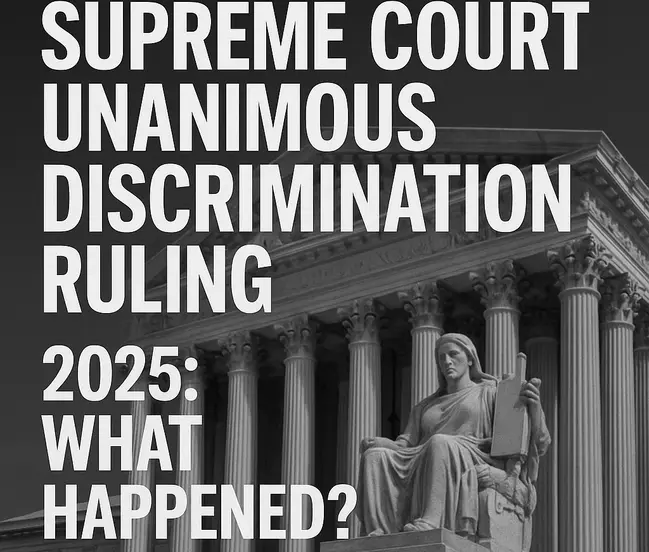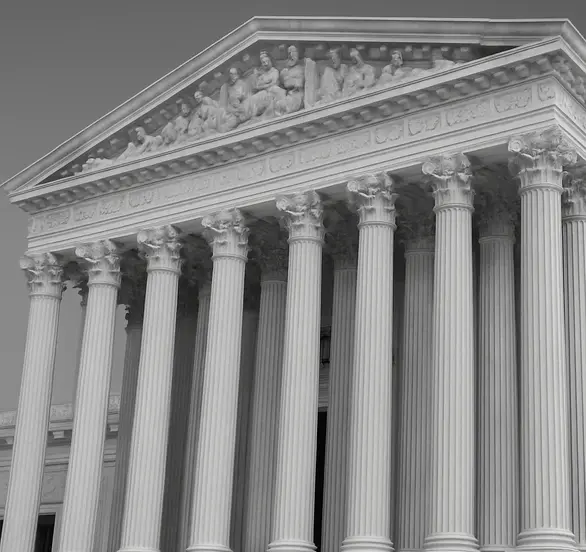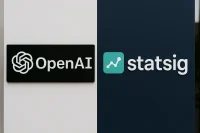Supreme Court Unanimous Discrimination Ruling 2025: What Happened?
In a landmark decision, the US Supreme Court ruled unanimously in the case of Ames v. Ohio Department of Youth Services, clarifying that discrimination is discrimination—regardless of whether the plaintiff is part of a majority or minority group. The case centered on Marlene Ames, a straight woman who claimed she was passed over for promotion and demoted in favor of two gay coworkers. Lower courts had previously dismissed her lawsuit, requiring her to show a historical pattern of discrimination against straight people—a nearly impossible standard.
Key Points of the Ruling
- Unanimous Decision: All nine justices agreed that no extra evidentiary burden should be placed on majority group members (such as straight or white employees) to bring a discrimination claim.
- Equal Access to Justice: The Court ruled that everyone, regardless of background, should have the same opportunity to prove discrimination in court.
- Impact on State Laws: The decision overturns requirements in Ohio and 20 other states that made it harder for majority group members to bring discrimination cases.
- Written by Justice Ketanji Brown Jackson: The opinion emphasized that “discrimination is discrimination,” and all workers deserve equal protection.
Read the official Supreme Court opinion
See CBS News coverage of the ruling
What Does the Supreme Court Unanimous Discrimination Ruling 2025 Mean for Workers?

Level Playing Field for All
- No more “reverse discrimination” hoops—majority and minority group members are treated equally under Title VII.
- Plaintiffs no longer need to prove a historical pattern of discrimination to have their day in court.
- The ruling reinforces that the law protects everyone from workplace discrimination.
How the Legal Process Works Now
- Plaintiff’s Burden: Any employee can bring a discrimination claim by showing enough evidence to suggest discrimination occurred.
- Employer’s Response: The employer must then provide a legitimate reason for the employment action.
- Final Step: The burden shifts back to the plaintiff to prove the employer’s reason is a pretext for discrimination.
Explore Top Jobs on WhatJobs
Looking for new opportunities? Search thousands of jobs on WhatJobs and find your next career move today!
Employer Responsibilities After the Ruling
What Employers Need to Know
- All discrimination claims must be treated seriously, regardless of the claimant’s background.
- HR policies should be reviewed to ensure compliance with the new legal standard.
- Training for managers and HR staff is essential to prevent both direct and indirect discrimination.
Best Practices for Compliance
- Conduct regular anti-discrimination training.
- Review promotion and termination procedures for fairness.
- Document all employment decisions thoroughly.
Broader Implications: Beyond Discrimination
Unanimous Ruling on Gun Manufacturer Liability
On the same day, the Supreme Court also issued a unanimous decision in a case involving gun manufacturer liability. The Court ruled that US gun makers, such as Smith & Wesson, cannot be held liable for crimes committed outside the US by third parties, such as Mexican drug cartels. This decision upholds existing federal law that generally shields gun manufacturers from liability, except in specific cases like aiding and abetting.
- Key Takeaway: The Court deferred to Congress, emphasizing that changes to gun manufacturer liability must come from legislation, not the courts.
Read more about gun manufacturer liability
How to Respond if You Face Discrimination at Work
Steps for Employees
- Document Everything: Keep records of incidents, emails, and performance reviews.
- Report Internally: Use your company’s HR channels to report discrimination.
- Seek Legal Advice: Consult with an employment lawyer if your concerns are not addressed.
- Know Your Rights: Title VII protects all workers from discrimination based on race, gender, sexual orientation, and more.
Resources for Support
Need Career Advice?
If you’re facing workplace challenges or need guidance on discrimination issues, get free career advice from WhatJobs experts.
FAQs
What is the Supreme Court Unanimous Discrimination Ruling 2025?
The Supreme Court Unanimous Discrimination Ruling 2025 clarifies that all workers, regardless of background, have equal access to the courts for discrimination claims, eliminating extra burdens for majority group members.
How does the Supreme Court Unanimous Discrimination Ruling 2025 affect employers?
Employers must treat all discrimination claims equally and ensure their HR policies comply with the Supreme Court Unanimous Discrimination Ruling 2025.
What should employees do if they face discrimination after the Supreme Court Unanimous Discrimination Ruling 2025?
Employees should document incidents, report internally, and seek legal advice, knowing the Supreme Court Unanimous Discrimination Ruling 2025 protects their right to a fair hearing.
Where can I learn more about the Supreme Court Unanimous Discrimination Ruling 2025?
For more on the Supreme Court Unanimous Discrimination Ruling 2025, visit official Supreme Court resources, legal aid organizations, and the WhatJobs Career Advice Center.




